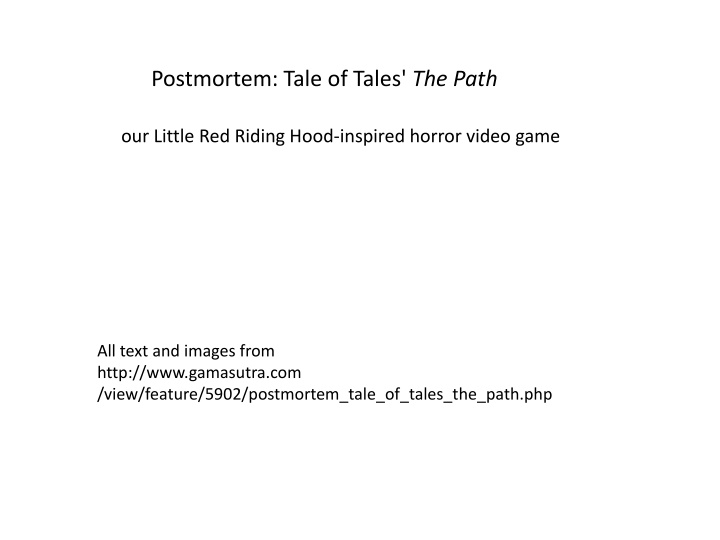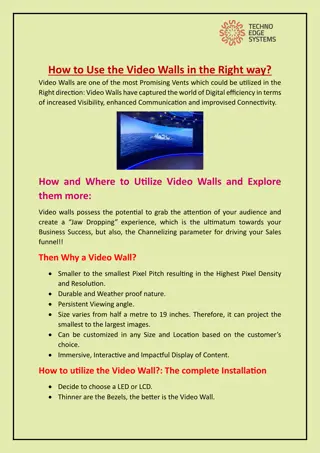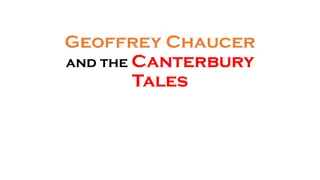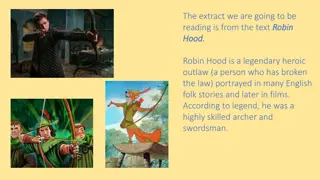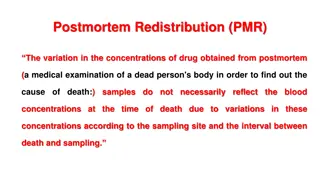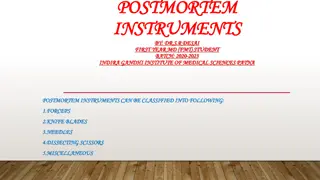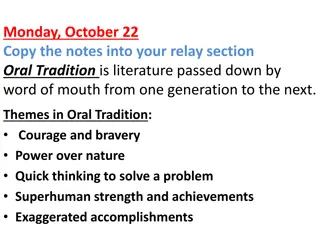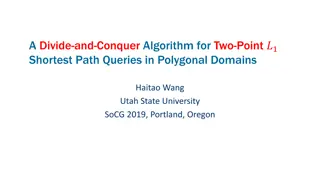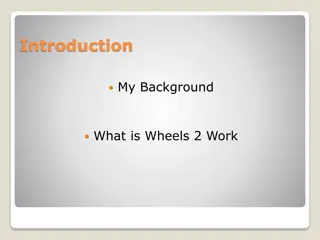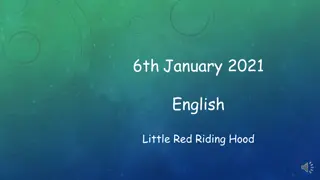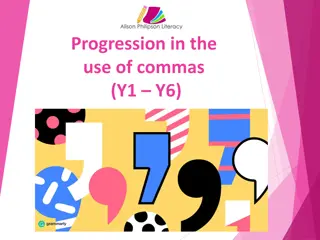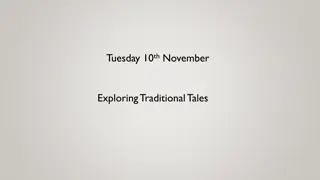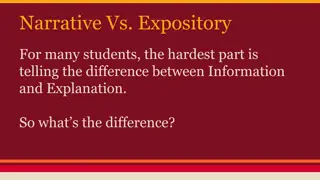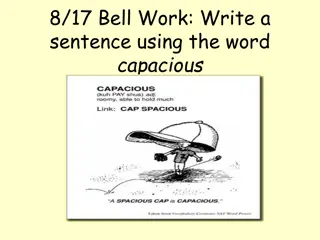Postmortem of Tale of Tales' The Path: A Little Red Riding Hood-inspired Video Game
In this postmortem analysis of The Path, a horror video game inspired by Little Red Riding Hood, the creators Michael Samyn and Auriea Harvey detail the history of the project from its inception in 1999 to its public launch in 2008. The game was intended to be short, non-linear, and focused on digital distribution, aiming to reduce production costs and increase revenue share for the developers. Funding challenges, prototyping phases, and key milestones such as securing grants and loans are discussed, shedding light on the journey of bringing this unique game to life.
Download Presentation

Please find below an Image/Link to download the presentation.
The content on the website is provided AS IS for your information and personal use only. It may not be sold, licensed, or shared on other websites without obtaining consent from the author.If you encounter any issues during the download, it is possible that the publisher has removed the file from their server.
You are allowed to download the files provided on this website for personal or commercial use, subject to the condition that they are used lawfully. All files are the property of their respective owners.
The content on the website is provided AS IS for your information and personal use only. It may not be sold, licensed, or shared on other websites without obtaining consent from the author.
E N D
Presentation Transcript
Postmortem: Tale of Tales' The Path our Little Red Riding Hood-inspired horror video game All text and images from http://www.gamasutra.com /view/feature/5902/postmortem_tale_of_tales_the_path.php
History of the project 1999: we [Michael Samyn, Auriea Harvey] meet in person for the first time. We got to know each other doing what we loved doing most: making websites and interactive artwork online. We begin living and working together soon after. June 2002 business plan: we presented our first project -- 8, a dreamy adventure game based on Sleeping Beauty 2003: The two of us radically redirect all our creative attention towards the medium of video games. February 2005: After two years of designing and prototyping, our first project, 8, is rejected by games publishers, then the only source of funding. 2005: we started looking around for a production budget for 144.
In July 2006, a first prototype was committed to our 144 repository. The Deaf Mute Girl in the White Dress from the 8 project grew up a bit and became the Girl in White in 144.
The Path was going to be a short game that was mostly non-linear (no plot-based narrative, emergent behavior, few cut scenes). And we were going to focus on digital distribution exclusively, not only because it makes sense in terms of technology, but also because it reduces production and marketing costs while drastically increasing the revenue share for the developer (meaning a much smaller volume of sales is required to break even).
By the end of 2006, we had secured 26,000 euro from the Flemish Audiovisual Fund and Design Flanders for a first phase of the production. In January 2007, we implemented the Drama Princess engine in the 144 prototype, which signified to us the start of the actual pre-production.
We decided that we needed a more descriptive title for the game. In May 2007, a first prototype of The Path was sent to our animator and musicians. November 2007, things got really serious when we signed a contract with CultuurInvest for a 90,000 euro loan. On 24 March, 2008, we had our public launch event in the Yerba Buena Center for the Arts, right around the corner of the Moscone Center where the Game Developers Conference was taking place.
The Path was an idea born with the title 144. The name 144 encompassed the spirit of the project. Somehow that number came to symbolize a girl's restlessness, the sound of footsteps on dry leaves, the smell of pine trees, dim sunlight through filtering clouds. The conception of the 144 idea was heady, painful and soul-searching, in both art direction and interaction design, as we tried to discover the core of "what it all meant" in order to communicate even a fraction of these sensations, emotions, and inner stories to the player of a computer game.
Test models by Ben Regimbal, Vykarian, Billy Miller, and Greg Savoia. Guys, we're sorry we didn't know what we were asking of you.
We did not want to compete on 3D graphics with big 3D game titles. We wanted it to be unique, as if every screen were somehow handmade.
Our process consists of making the game and then designing it. That means using prototypes as a tool for guiding the design. As soon as we can, we want to have something in the game engine to play with. It really cannot exist for us in theory; only once we have "made it real" in prototype can the idea mean anything. We do not want to be mislead by a pretty drawing or model. We want to get a camera in place, work out some preliminary navigation. We are then constantly looking at that prototype, or videos of it. And from these we iteratively make the decisions which become the final game.
What Went Wrong 1. Not enough time This probably happens in every video game production: many great ideas need to be abandoned because of lack of time. In the production of The Path, we also had to make some tough choices between improving our technology and polishing art. Since we thought the aesthetic appeal of The Path was going to be one of its strongest features and since we are far from master programmers, we compromised heavily on the technology side. But some players were turned off by the lack of technical excellence.
2. Recruiting a modeler We didn't originally intend for Auriea to design, model, and texture all the characters. This is a time-consuming task, and her tasks as data director were far more crucial to the project. But all the modelers we tested just couldn't get the style right.
3. Bad crunch We had planned the production to be finished quite a bit before launch, to allow us sufficient time to fine-tune the experience. But as the work kept piling up and progress was slower than expected, we started eating into that time as if it were a mere buffer zone. To compensate for this loss, we worked harder. For four months in a row, we worked 14 hours per day. After a while you get used to it.
4. Publishers & Console Companies We didn't really need support from publishers for the development of The Path. The success of casual games and Nintendo's Wii and DS consoles had certainly stimulated the interest of publishers in games that might be smaller than blockbusters and perhaps even original in design. But in the end, it is still the bean counters that make the decisions.
5. The non-gamer audience A more painful place for us to fail was our hope to reach an audience outside of the typical gamer demographic. We thought that designing a game with an original aesthetic appeal and theme and an interaction system that was very easy and forgiving would be enough. This is a serious problem for independent developers, and somewhat of a vicious circle for innovation in the industry. It is difficult to resist the urge to give in and make our games more game-like. But if we don't explore the vast terrain outside of games, who will?
6. No post-launch budget By launch time, we were virtually broke.
7. Not commercially viable We were never certain how much money we would make with The Path. Not in the slightest. We didn't know if we were going to sell a few hundred copies or hundreds of thousands. We literally had no idea. The total production budget of The Path was around 300,000 euro. And so far, one year after launch, the Path has brought about 135,000 euro back to us.
What Went Right 1. Did it We succeeded in what we set out to do: to create a mid-sized video game from start and finish and publish and distribute it to an audience. This may seem obvious. But each video game that is created is a little miracle.
2. Accessible technology One of the main reasons why a small team without engineers is able to create a complex piece of software like The Path is the technology that is available now. We did all of the modeling and texturing in Blender and all of the programming in Quest3D.
3. Working with artists Each member on the development team for The Path is an artist. Not just an "artist" in the games industry sense of the pairs of hands required to make Thee Mighty Code look and sound pretty to human players, but an artist in the sense that they are capable of communicating on a profound level through their medium.
4. Testing Before The Path, we had never done a lot of playtesting for any of our projects. Here and there, we had people try out early versions of our work. But this rarely had any real impact on the design of the game. This time, we sent a message to our mailing list to invite people who live in or near Belgium and were available for an entire day to come and play The Path at our studio. Many people responded, and in the end we made 12 appointments. Each tester would come to our studio and play the game in a room set up for the occasion. The first few hours we would sit there and watch them play without saying much. Then we would evaluate their experience over tea. It's counter-intuitive for a creative person to allow an outsider to influence their work. But we're very glad we did it.
5. Marketing We had always been very active on the internet. In a way, the internet had been our home, our country, for a long time. To some extent, everything we did online served as marketing for The Path.
6. Press and audience The biggest surprise for us has been the overwhelmingly positive response of the gaming press. While almost every article starts with the warning that The Path may not really be a game, and that as such it may divide the audience in extreme camps, almost every journalist ends with appreciating either the experience itself or the boldness of our design.
7. Girls It's a bit of a clich by now to discuss female gamers. But that doesn't diminish the pride we take in having created a video game that women can really feel is about them. The Path doesn't just give girls a female avatar to play boy games with, and it doesn't paint everything pink with smiling faces and hearts. The Path is a game that is about things that can be deeply important to women, and it is played in a feminine way.
8. Artistic success Despite explicitly trying to make something with at least some commercial viability, The Path became an emotionally deep and intellectually stimulating experience for many.
9. Financial success If The Path had been a pure for-profit project, it would have been a financial failure (at least so far). But The Path was not purely commercial.
"I kind of don't like the game. This is not a criticism. If anything, it's the highest compliment I could pay it." - John Walker, Rock, Paper, Shotgun, March 2009 "In the end, The Path is a little bit like getting punched in the nose by a centaur. It's momentarily painful, but you get to spend the next few days trying to figure out precisely what the hell just happened to you." - Justin McElroy, Joystiq, March 2009 "It feels like being the only person laughing in a cinema -- except the film you're watching is Schindler's List." - Joe Martin, bit-tech.net, March 2009
